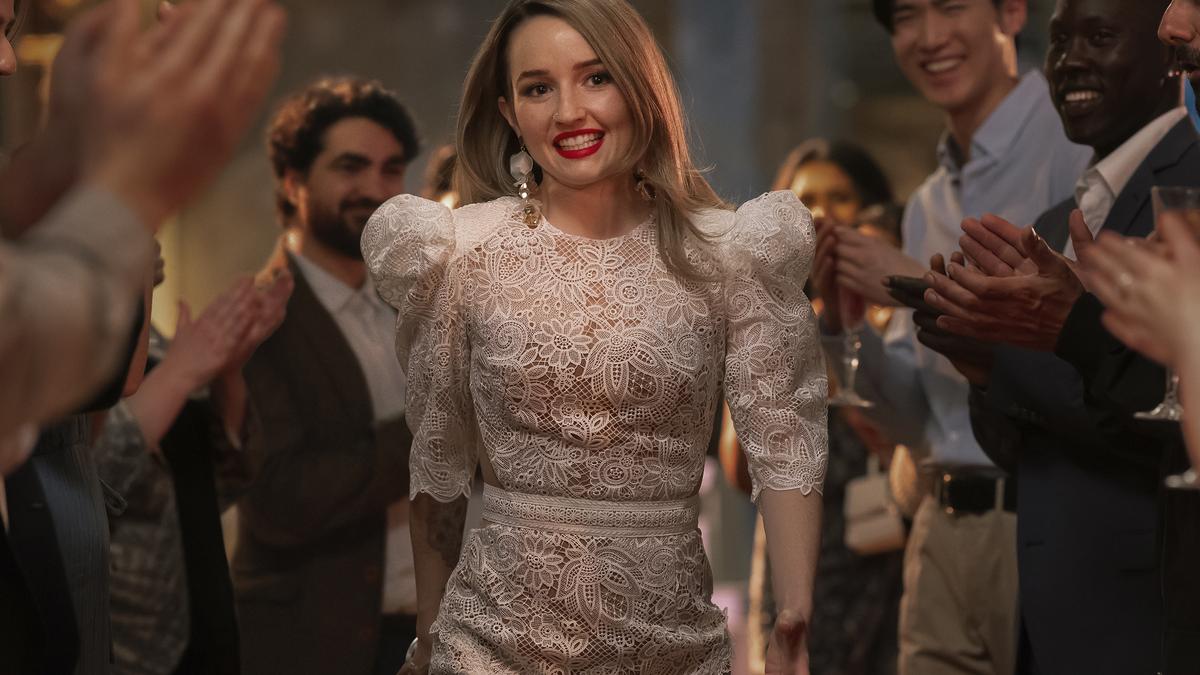Wellness empires are often built on a foundation of emotional manipulation and carefully curated aesthetics, led by privileged influencers who monetise vulnerability and the illusion of relatability (Netflix via AP)
| Photo Credit: AP
The Netflix series Apple Cider Vinegar, starring Kaitlyn Rochelle Dever as Belle Gibson and created by Samantha Strauss, is based on the real-life case of healthcare fraud perpetrated by Belle Gibson, a self-proclaimed wellness guru who falsely claimed to have cured her cancer through natural remedies. Yes, Belle was exposed, and everyone learnt she never had cancer. But the real question is – how was she so successful, and why did so many believe her?
Among the many controversies surrounding the series – from character portrayals to its critique of alternative medicine, the story unpacks how misinformation thrives in the gaps left by an inaccessible healthcare system.
Comprising six episodes, that each begin with a stark reminder: “This is a true story based on a lie,” the series unfolds across three main character perspectives – Belle, a pseudoscience scammer who pretends to have cancer, Milla, an actual cancer patient with the means to explore treatment options, and Lucy, also battling breast cancer, and caught in the middle. Through their lives, the series paints a troubling picture of modern healthcare, where doctors are cold and distant, the burden of understanding their treatment falls on patients, and desperation often leads families toward attractive-sounding wellness scams.
The series’ layered screenplay stimulates questions and your mind spirals with its own set: Are we truly part of a justice-based healthcare system, or are we simply navigating a rigid medical model that has no space for patients’ voices? Do we have reliable, evidence-based support systems, or are we forced to research our own diagnoses? Does the medical community know how to talk to us?
Belle Gibson understood one thing – how to fake relatability. She appropriated the lives of those with disabilities, cloaked herself in chronic illness, and crafted a carefully curated aesthetic that resonated with those who were not naive, but exhausted with navigating an unfriendly system that seemed not to listen to them. For those living with constant pain therefore, the illusion of control that alternative wellness offered, was comforting.
Milla Blake, played by Alycia Debnam-Carey, embodies the many seriously ill individuals who turn to alternative healing out of disappointment. Early in the series, she says, “I didn’t know the words to describe the rage I felt when the doctors looked at my body and only saw disease.” Her search for hope led her to wellness fads – coffee enemas, juice cleanses, and detox regimens – each promising to rid her body of toxins. This narrative, rooted in purity, is not unfamiliar in India, where vegetarianism is often intertwined with caste superiority and wellness is tied to godmen and self-proclaimed healers.
Faced with the choice of amputating her arm, Milla searches for anything that told her she didn’t have to. Like many, she believed she was on a path to “kill” cancer cells naturally. She documented her journey online, unknowingly influencing many, including her own mother, Tamara (played by Susie Porter), who saw the dangers on her daughter’s path but lost her own battle to cancer.
Lucy, played by Tilda Cobham-Hervey, finds modern healthcare unfeeling and indifferent. Her husband Justin (Mark Coles Smith), a journalist working to expose Belle’s fraud, struggles to balance his fight for the truth with supporting Lucy as she too, gets drawn into alternative healing. He is good with facts and science but falters when it comes to providing emotional support — a catalyst to Lucy’s turning to alternative practitioners who offer immersive, comforting explanations. Lucy oscillates between spiritual healing and chemotherapy and survives, not because of certainty, but despite it.
Through its six episodes, the series makes one thing clear: Belle Gibson was a fraud. Not everyone around her believed her entirely, but her carefully crafted ambiguity made questioning her exhausting. She never explicitly urged anyone to abandon their medication. As she points out in the show, she never asked anyone to drink bleach. Instead, she selectively manipulated her audience in an effort to promote herself. Her villainy is unquestionable and Kaitlyn as Belle Gibson’s performance is chillingly precise. There are moments when you watch her reality detach from itself, when her lies become too much to handle – yet she carries it all with unnerving ease.
The questions you are left with are: can our current healthcare system truly challenge the rise of Belles and her ilk with science? How many Belles are patients in our country following right now and why? Are our government and private sector genuinely committed to a justice-based healthcare system built on trust, education, and compassion?
At the final episode credits, just as you begin to read on screen about the real Belle’s real fate, she appears on screen and says, “You know what? You can Google it.”
Published – February 21, 2025 02:55 pm IST

